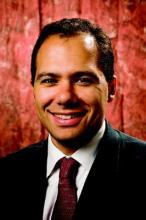“It would be kicking the can down the street,” he said. “A 4-4 ruling, the court doesn’t like to issue those if they can avoid them. If it can achieve agreement on narrower ways of resolving cases, I think it’s going to try to do that.”
If the justices move forward with deciding the core of the case, the vote will likely come down to Justice Kennedy, said Ruthann Robson, a law professor at the City University of New York School of Law and co-editor of the Constitutional Law Professor’s Blog.
While Justice Alito seemed to favor the state’s side, Justice Thomas was predictably silent, and Justice Roberts appeared to lean toward the state’s side, on the condition it could prove a rational basis for enacting HB2, she said. But Justice Kennedy is the mystery vote, she noted, adding that he was in the majority of the 1992 decision in Planned Parenthood of Southeastern Pennsylvania v. Casey, which upheld Roe v. Wade.
“He seems to be in the middle on this issue,” Ms. Robson said. “Justice Kennedy did seem to be troubled during arguments about the idea that nonsurgical abortions being curtailed could cause women to have more surgical abortions. He specifically asked the Texas [solicitor general] about this.”
Given Justice Kennedy’s strong opposition to the so-called “partial birth” abortion procedure, expressed in the 2007 Gonzales v. Carhart case, it would seem he would be especially concerned with late-term abortions, she said.
Ms. Robson said she was surprised with the depth to which the justices compared abortion with other medical procedures during the debate and questioned the differences in safety. Justice Ginsburg, for instance, noted the statistical dangers of childbirth, colonoscopies, and dental procedures and inquired why Texas had not placed similar restrictions on those practices.
“That’s really at the heart of the case,” Ms. Robson said. “If abortion is not more dangerous than other procedures, the question is, why isn’t the state protecting women’s health in colonoscopies and dental procedures and other kinds of things? At the heart of the case is the problem of legislators seemingly acting to decrease abortion in the guise of protecting women’s health.”
A split vote, which would uphold the appeals decision, or a remand of the case could come as early as March 7, Mr. Shapiro said. If justices decide to issue an opinion, the ruling would likely come at the end of the court’s term in June.
On Twitter @legal_med



